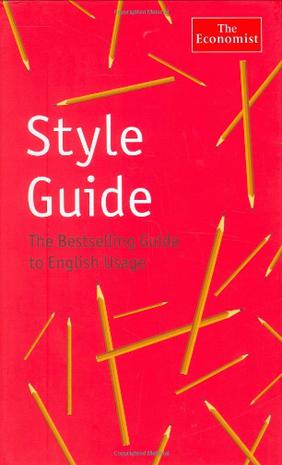欢迎来到相识电子书!
标签:Economist
-
Capitalism, Socialism, and Democracy
Capitalism, Socialism and Democracy is the most famous book by Joseph Schumpeter in which he deals with capitalism, socialism and creative destruction. First published in 1942, it is largely unmathematical, compared with neoclassical works, focusing on the unexpected, rapid spurts of entrepreneur-driven growth instead of static models. The book is unusual insomuch as it was written to appear sympathetic to socialism, beginning with an account of Karl Marx, in order to encourage socialists to read it. Schumpeter hoped they would achieve self-recognition of the problems with socialism in the light of the book, without having to be explicitly told: if the book appeared to be favourable to capitalism, he feared socialists, his target audience, would not bother to read it. -
The Economist Style Guide
Rare is the style guide that a person--even a word person--would want to read cover to cover. But The Economist Style Guide, designed, as the book says, to promote good writing, is so witty and rigorous as to be irresistible. The book consists of three parts. The first is the Economist's style book, which acts as a position paper of sorts in favor of clear, concise, correct usage. The big no-noes listed in the book's introduction are: "Do not be stuffy.... Do not be hectoring or arrogant.... Do not be too pleased with yourself.... Do not be too chatty.... Do not be too didactic.... [And] do not be sloppy." Before even getting to the letter B, we are reminded that aggravate "means make worse, not irritate or annoy"; that an alibi "is the proven fact of being elsewhere, not a false explanation"; and that anarchy "means the complete absence of law or government. It may be harmonious or chaotic." Part 2 of the book describes many of the spelling, grammar, and usage differences between British and American English. While many Briticisms are familiar to most Americans and vice versa, there are some words--such as homely, bomb, and table--that take on quite different meanings altogether when they cross the Atlantic. And part 3 offers a handy reference to such information as common business abbreviations, accountancy ratios, the Beaufort Scale, commodity-trade classifications, currencies, laws, measures, and stock-market indices. The U.S. reader should be aware (but not scared off by the fact) that some of the style issues addressed are specifically British. --Jane Steinberg --This text refers to an out of print or unavailable edition of this title.
热门标签
下载排行榜
- 1 梦的解析:最佳译本
- 2 李鸿章全传
- 3 淡定的智慧
- 4 心理操控术
- 5 哈佛口才课
- 6 俗世奇人
- 7 日瓦戈医生
- 8 笑死你的逻辑学
- 9 历史老师没教过的历史
- 10 1分钟和陌生人成为朋友


